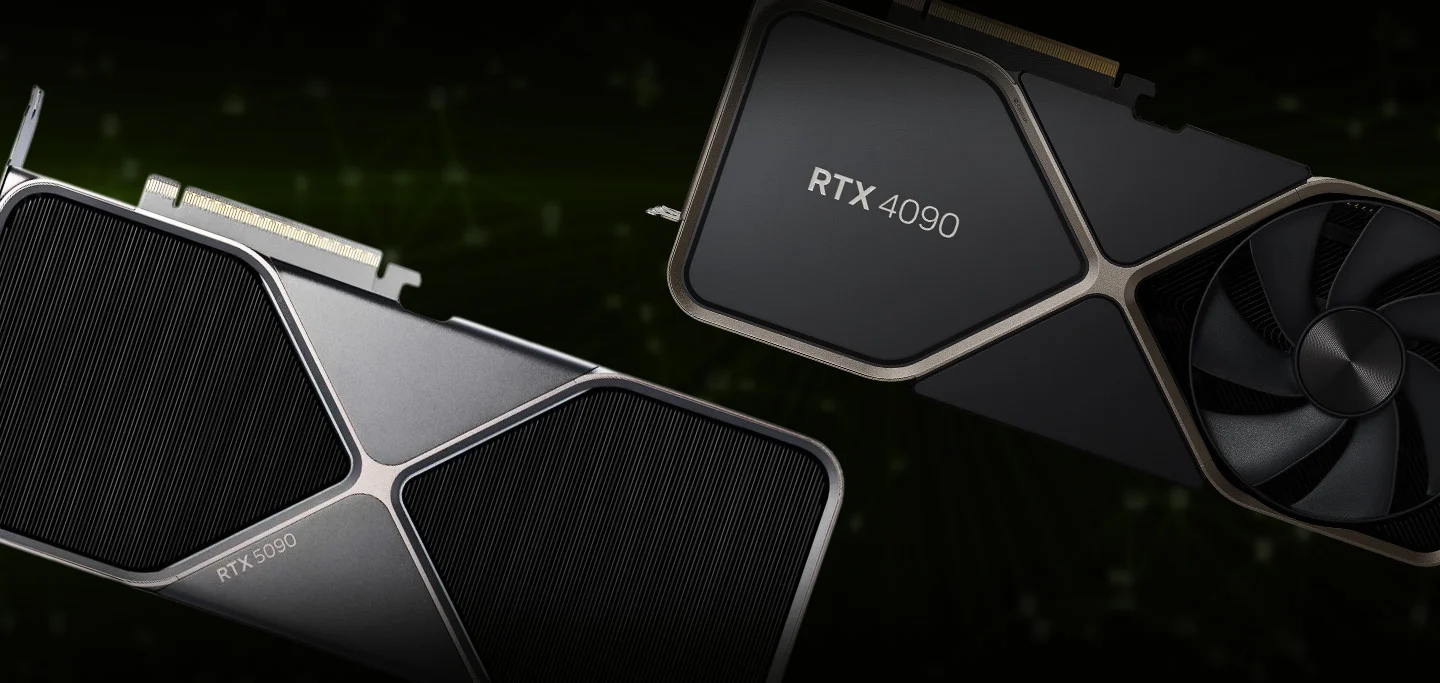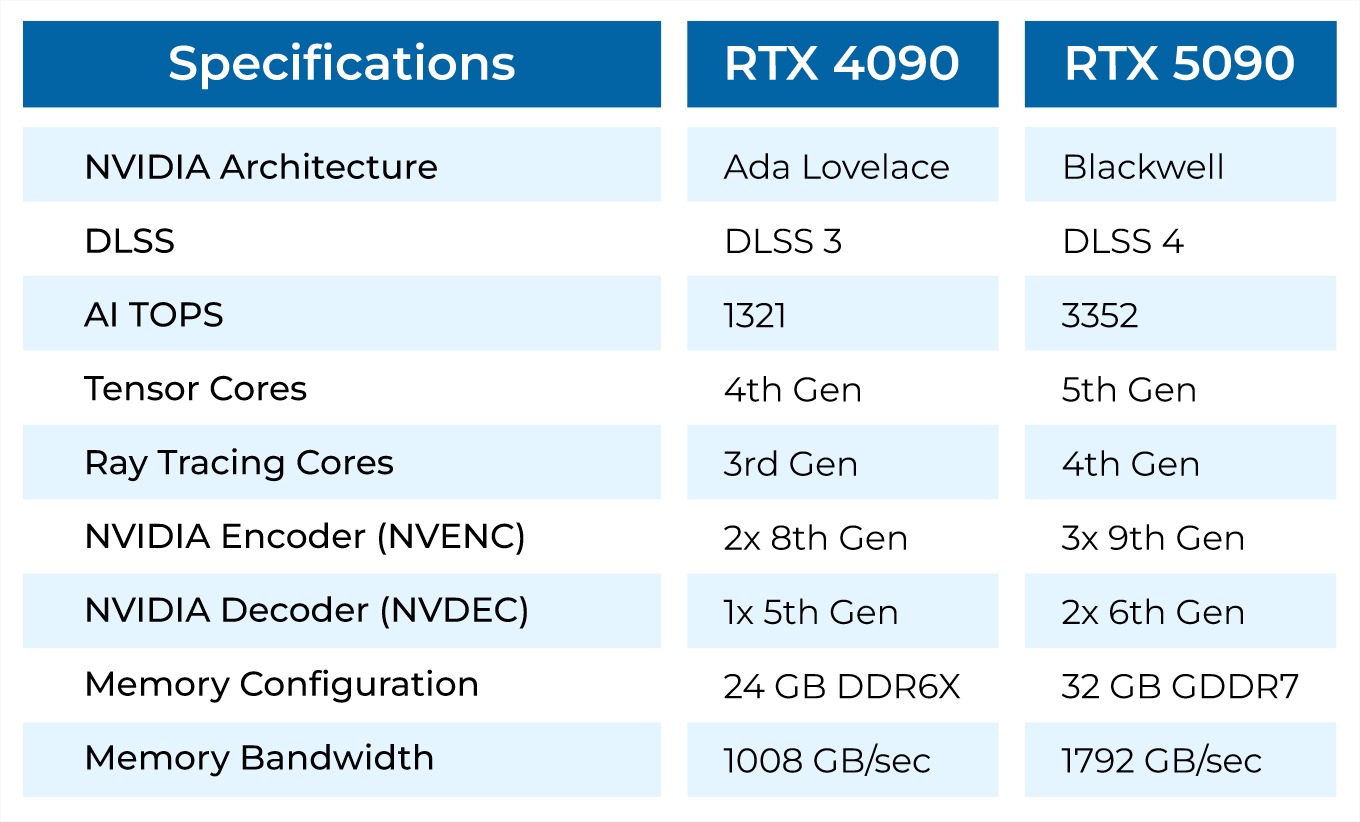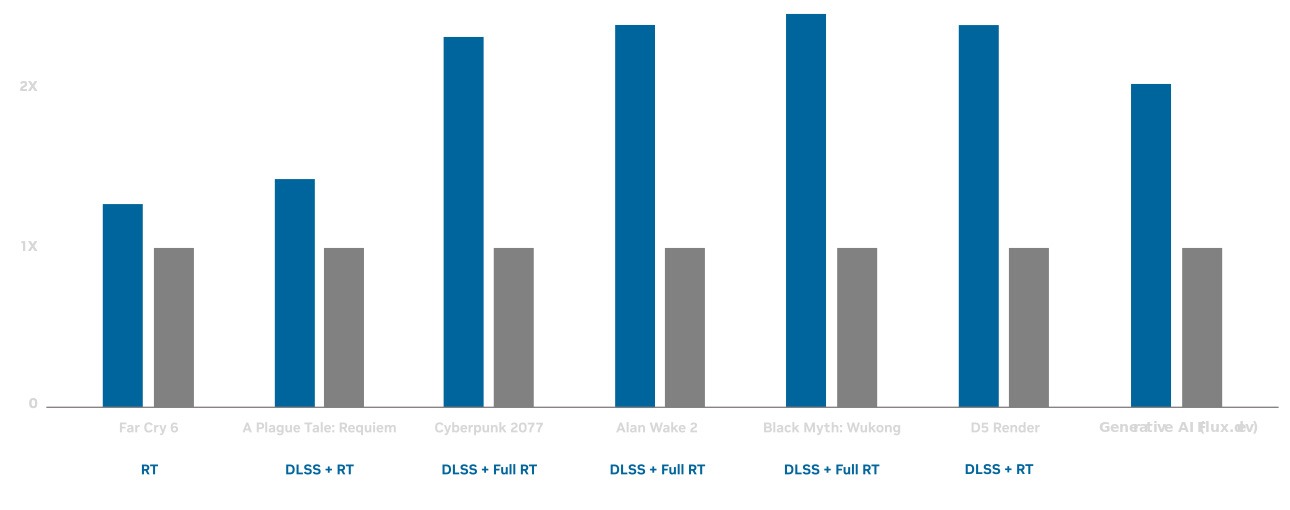For Professionals, By Professionals

Discover ProX PC for best custom-built PCs, powerful workstations, and GPU servers in India. Perfect for creators, professionals, and businesses. Shop now!
SERVICES
WE ACCEPT










Nvidia’s GPUs have been at the forefront of AI applications and gaming. With the release of the Nvidia GeForce RTX 5090, the spotlight is now on how it compares to its predecessor, the RTX 4090. Let’s explore the differences in performance, features, and specifications in simple terms.
The Nvidia GeForce RTX 4090 was launched as a powerhouse GPU designed for high-end gaming and AI tasks. Now, the RTX 5090 has entered the market, promising significant upgrades. This comparison highlights how these GPUs stack up against each other in terms of architecture, performance, and usability.
 Architecture
Architecture
The RTX 4090 uses the Ada Lovelace architecture, while the RTX 5090 is built on the new Blackwell architecture. This upgrade brings better power efficiency and higher performance. Blackwell is optimized for next-gen applications, making the RTX 5090 more capable for demanding tasks.
DLSS (Deep Learning Super Sampling) is Nvidia’s technology to boost gaming performance and visual quality.
DLSS 4 represents a significant leap, especially for gamers who demand the best visuals.
AI performance is measured in TOPS (Tera Operations Per Second).
The RTX 5090’s AI capabilities are more than double, making it ideal for AI-driven applications like deep learning, neural networks, and real-time AI.
Tensor Cores accelerate AI and deep learning tasks.
The new generation Tensor Cores in the RTX 5090 are faster and more efficient, ensuring better performance in AI-based tasks.
Ray tracing enhances lighting and shadows in games, making them more realistic.
The RTX 5090 provides smoother and more detailed ray-traced visuals.
Encoding and decoding are crucial for content creators.
The RTX 5090 offers faster encoding and decoding, which benefits video editing and live streaming.
Memory and bandwidth are critical for handling large datasets and high-resolution gaming.
The RTX 5090’s memory is larger and faster, making it better suited for 4K and 8K gaming as well as complex simulations.
In gaming benchmarks, the RTX 5090 outperforms the RTX 4090 by a significant margin. Games that run at ultra settings on the RTX 4090 see even higher frame rates and smoother performance on the RTX 5090. Features like DLSS 4 and advanced ray tracing provide an immersive experience.
For AI developers and researchers, the RTX 5090 is a game-changer. Its higher AI TOPS, advanced Tensor Cores, and faster memory make it an excellent choice for tasks like training large models and real-time inference.
The Blackwell architecture improves power efficiency in the RTX 5090. Despite its higher performance, it manages energy consumption better than the RTX 4090. This efficiency is especially important for users running intensive tasks for long hours.
While pricing details may vary, the RTX 5090 is expected to be priced higher due to its advanced features and performance gains. For gamers and professionals seeking cutting-edge technology, the investment is worthwhile.
The Nvidia GeForce RTX 5090 is a significant upgrade over the RTX 4090. With advancements in architecture, AI capabilities, ray tracing, and memory, it sets a new standard for GPUs. While the RTX 4090 remains a solid choice, the RTX 5090 is the go-to option for those seeking top-tier performance in gaming, AI, and professional applications.
If you’re considering upgrading, the RTX 5090 promises to deliver a future-proof experience with unparalleled power and efficiency.
Share this: